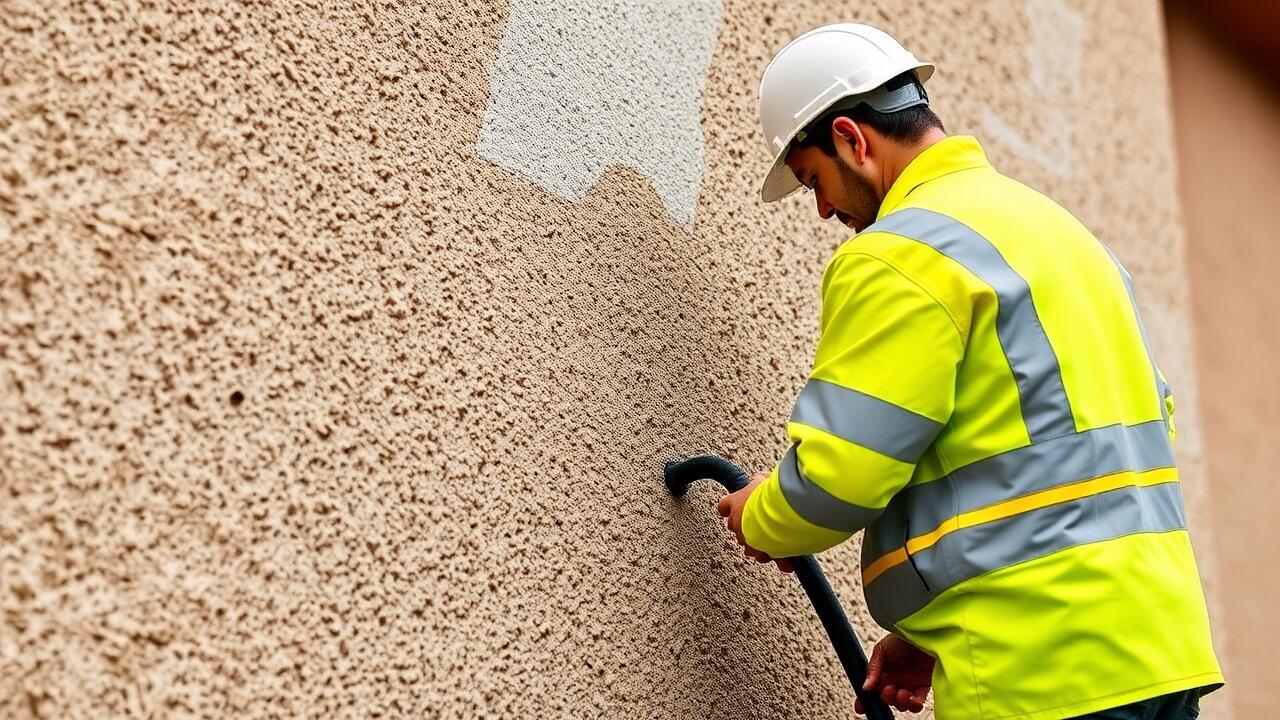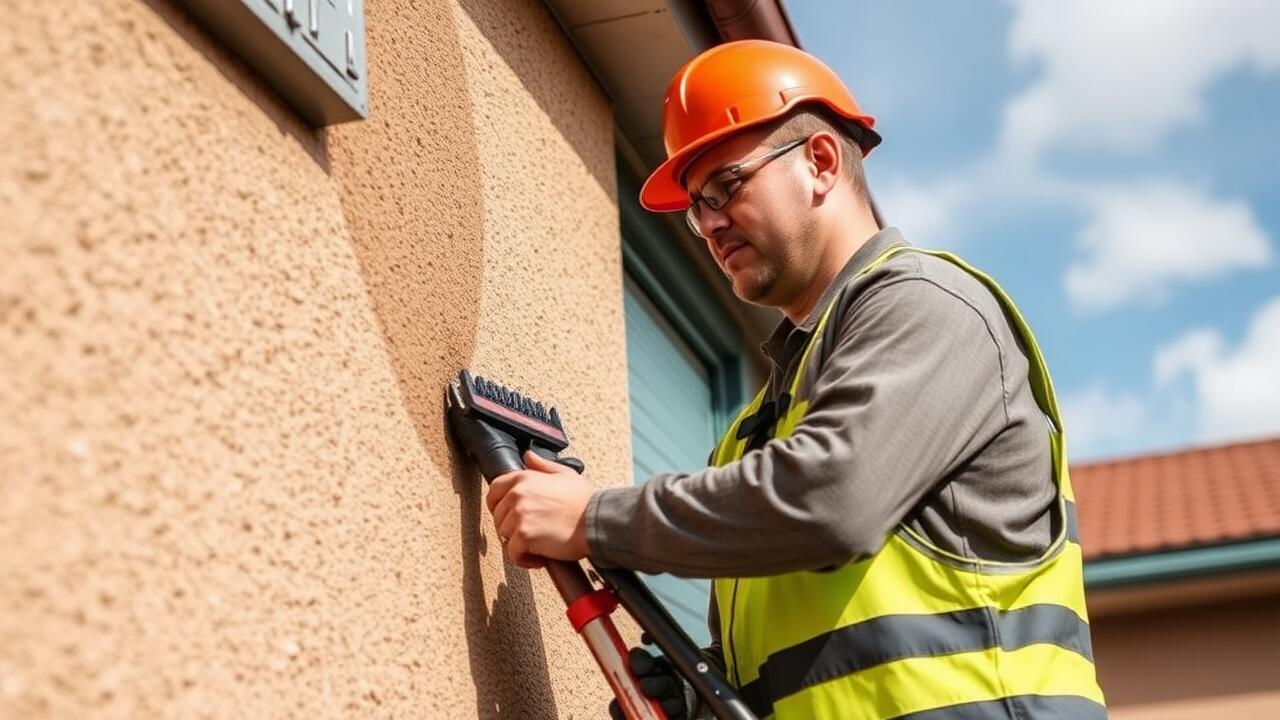
Techniques for Removing Stucco
Removing stucco from walls can be approached through various techniques, each suited for different situations. Manual methods typically involve using hand tools such as chisels and pry bars, allowing for precise control over the removal process. This approach can be quieter and less intimidating for homeowners but may be labor-intensive and time-consuming. For larger projects, mechanical techniques like pneumatic chisels or angle grinders can make the job faster. These tools effectively strip stucco off surfaces but require careful handling to avoid damaging the underlying wall.
When considering the removal of stucco, it’s important to address any moisture issues behind the surface. Moisture can lead to mold growth and structural damage, which may not be apparent until the stucco is removed. Professionals often recommend assessing the condition of the wall prior to the removal process. For residents in the area, experts specializing in "Stucco Removal Boyle Heights, Los Angeles" can provide valuable insights into this preventative step. It ensures that the structural integrity of the home remains intact while undergoing renovations or repairs.
Manual vs. Mechanical Methods
When considering stucco removal, both manual and mechanical methods are available, each offering distinct advantages. Manual techniques typically involve hand tools such as chisels, hammers, and a scraper. This approach allows for greater control and precision, particularly in tight spaces or intricate designs. Many homeowners in Boyle Heights, Los Angeles, prefer this method for smaller projects. It can also minimize the risk of damage to the underlying surfaces.
Mechanical methods, on the other hand, utilize power tools like jackhammers and grinders to remove stucco more quickly and efficiently. This approach is ideal for larger areas or when the stucco is particularly thick or stubborn. While it may result in more dust and debris, it significantly speeds up the process, making it suitable for contractors and larger renovation projects. Those seeking efficient stucco removal in Boyle Heights should weigh the pros and cons of each method based on their specific needs and goals.
Dealing with Moisture Behind Stucco
Moisture problems behind stucco can lead to significant issues if not addressed prior to removal. This moisture can originate from various sources, including leaks in roofing, plumbing issues, or inadequate ventilation. Identifying the exact source is crucial. A thorough inspection of the area can reveal hidden water damage, with mold and rot often lurking beneath the surface. Homeowners in areas like Boyle Heights, Los Angeles, should be particularly vigilant, as the climate can exacerbate moisture problems.
Once moisture is detected, it is essential to take immediate action. Allowing the area to dry out completely is critical before beginning the stucco removal process. Depending on the extent of the moisture damage, remediation may be necessary to prevent further deterioration. Engaging professionals who specialize in moisture control can help ensure that any underlying issues are resolved. This step is particularly important for those undertaking stucco removal in Boyle Heights, Los Angeles, as it sets the foundation for a successful and lasting repair.
Addressing Water Damage
Water damage is a significant concern when removing stucco from walls. This moisture can compromise the structural integrity of the underlying framework. Before any stucco removal project in areas like Boyle Heights, Los Angeles, it is essential to conduct a thorough inspection. Identifying signs of water damage, such as mold, rotting wood, or discoloration, allows for timely repairs. Ignoring these underlying issues can lead to more extensive damage and costly repairs down the line.
After assessing the damage, remediation is crucial. This could involve replacing sections of damaged wood or installing a vapor barrier to prevent future moisture intrusion. Ensuring proper ventilation in the area also plays a key role in mitigating moisture issues. If you’re planning a stucco removal in Boyle Heights, Los Angeles, addressing these water damage concerns early will enhance the longevity and stability of the new surface once the stucco is removed.
Post-Removal Cleaning and Repair
After the stucco has been removed, thorough cleaning of the surface is essential. This process involves scraping off any residual material and dust that may have settled during the removal. Using a pressure washer can effectively eliminate stubborn remnants and provide a clean slate for repairs or new finishes. Ensuring the wall is clear of debris not only improves aesthetics but also helps to prepare for any potential treatments or painting that will follow.
Once the surface is cleaned, it is crucial to assess for damages that may have occurred during stucco removal. Inspecting for cracks, holes, or moisture issues should take precedence. Any imperfections can be repaired using appropriate fillers or patches. For homeowners in areas like Boyle Heights, Los Angeles, ensuring these repairs are done correctly can prevent future complications and enhance the longevity of the wall's new finish. Addressing these details methodically sets the foundation for a successful renovation while maintaining the structural integrity of the home.
Best Practices for Surface Preparation
Before beginning the stucco removal process, it’s essential to prepare the surface properly. Remove any furniture, fixtures, or decor in the vicinity to protect them from debris. Cover the floors with drop cloths to catch any falling material. Ensure that your work area is well-ventilated, as dust particles can be harmful if inhaled. Use a suitable dust mask and protective gear, including goggles and gloves, to maintain safety during the project.
Inspect the stucco for cracks or loose areas that may complicate the removal. If necessary, use a chisel or pry bar to loosen these sections before applying more force. In Boyle Heights, Los Angeles, it’s crucial to assess the underlying structure, as moisture issues can often go unnoticed. Taking the time to prepare effectively will streamline the removal process and minimize damage to the walls beneath the stucco.
FAQS
What tools do I need to remove stucco from walls?
Common tools required for stucco removal include a chisel, hammer, pry bar, putty knife, and safety gear like goggles and gloves. For mechanical methods, a power scraper or a pneumatic chisel may be useful.
Is it better to remove stucco manually or mechanically?
The choice depends on the size of the project and the type of stucco. Manual methods are more precise and less noisy, while mechanical methods can speed up the process for larger areas but may risk damaging the underlying wall.
How do I handle moisture behind the stucco?
It's essential to inspect for moisture before removing stucco. If moisture is present, repair any leaks and allow the area to dry completely before proceeding with stucco removal and repair.
What should I do if I find water damage behind the stucco?
If you discover water damage, it’s crucial to address the source of the moisture first. Then, replace any affected materials like drywall or insulation and ensure proper drying before installing new stucco or wall finishes.
What is the best way to clean and prepare the surface after stucco removal?
After removing the stucco, clean the surface thoroughly to remove dust and debris. Check for any damage and repair it as necessary. It's also important to ensure the surface is dry and smooth before applying any new finishes.

